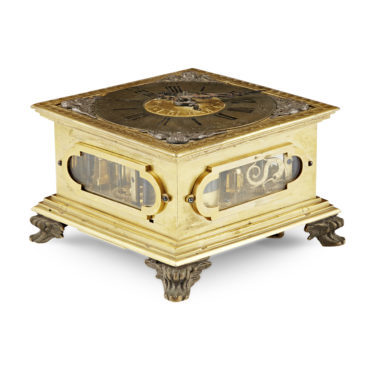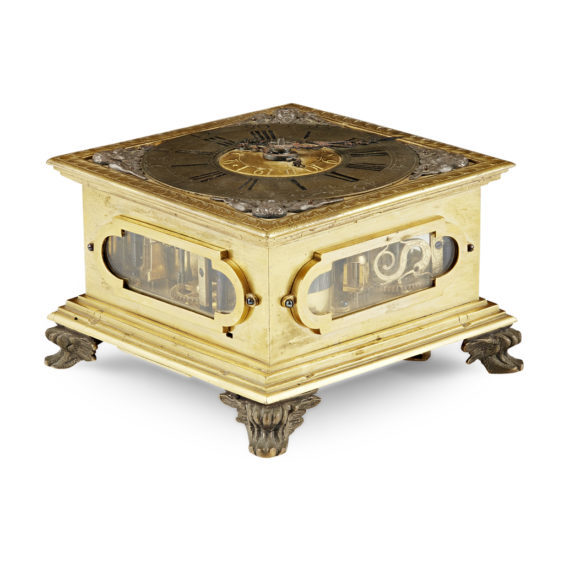A curiosity of the horological world is the early “flat”, or horizontal, clock.
Such things were placed on tables and their owners hovered over them to peer at the time. At no ‘time’, it seems, did makers ‘clock’ on to the notion that if they stood them upright, they could be viewed more easily.
Table clocks came in a variety of shapes, including square, hexagonal and octagonal, and were made from the mid-1500s until the 1700s.
The finest examples came from the south German town of Augsburg, with the best incorporating astronomical, astrological and calendar information on their dials. In fact, so important were such clocks to the repertoire of the clockmaker in cities like Augsburg and Nuremberg, that apprentices were given eight months to make an elaborate horizontal clock to demonstrate their fitness to be admitted to the guild and to practise as clockmakers.
They were not simply functional household items but prized for craftsmanship and technical ingenuity. In the homes of the well-to-do they were placed alongside scientific instruments such as telescopes and sundials. And the best by the top makers can easily exceed £20,000 today.
So to a German horizontal table clock which did well at Lyon & Turnbull’s sale in Edinburgh last month.
Made of brass and steel, and probably dating to the mid-18th century, its engraved brass frame was set at the corners with winged putti spandrels, above sides with glazed panels on a stepped base, raised on winged paw feet. Its movement struck on two bells and the five-inch brass face featured a central alarm dial.
Although unsigned, the clock attracted many suitors before being knocked down to a Continental bidder for a quadruple estimate £5,000.











